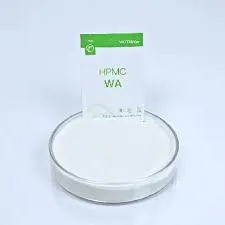
Nov . 03, 2024 06:17 Back to list
hpmc glass transition temperature
Understanding the Glass Transition Temperature in HPMC
Hydroxypropyl methylcellulose (HPMC) is a widely used cellulose derivative in various industries, particularly in pharmaceuticals, food, and construction. One of the critical thermal properties of HPMC that significantly influences its performance is the glass transition temperature (Tg). This property is essential for understanding the material’s behavior in different environments and applications.
The glass transition temperature is the temperature range at which an amorphous material transitions from a hard and relatively brittle glassy state to a more rubbery or viscous state. For HPMC, this transition is crucial as it directly affects its solubility, viscosity, and overall stability. The Tg of HPMC can be influenced by its molecular weight, degree of substitution, and the presence of plasticizers.
Factors Influencing Tg in HPMC
1. Molecular Weight Generally, the higher the molecular weight of HPMC, the higher the Tg. Higher molecular weight compounds have more extensive polymer chains, which can lead to increased entanglements and rigidity in the structure, raising the temperature required for the transition to occur.
2. Degree of Substitution The degree of hydroxypropyl and methyl substitution on the cellulose backbone affects the hydrophilicity and chain flexibility of HPMC. Higher degrees of substitution typically reduce Tg because the increased number of hydrophilic groups allows for more significant intermolecular interactions and flexibility in the polymer chains.
hpmc glass transition temperature

3. Plasticizers The addition of plasticizers, such as glycerin or PEG, can significantly lower the Tg by increasing the free volume within the polymer structure. This incorporation allows for greater molecular mobility, thus promoting a transition to the rubbery state at lower temperatures.
Importance of Tg in Applications
In pharmaceutical formulations, the Tg of HPMC plays a crucial role in determining the quality and efficacy of dosage forms. For instance, in controlled-release matrices, a lower Tg may ensure that the polymer can swell and maintain a flexible matrix conducive to the release of active pharmaceutical ingredients over time. Conversely, a higher Tg may be desired in formulations where long-term stability is critical since it can prevent premature drug release and ensure the integrity of the final product.
In food applications, the Tg of HPMC is equally vital. It affects the texture and mouthfeel of food products, influencing consumer acceptance. Food scientists often manipulate the Tg through formulation adjustments to achieve desired sensory properties while ensuring product stability during storage.
Conclusion
Understanding the glass transition temperature of HPMC is essential for optimizing its use in various applications. By carefully considering factors such as molecular weight, degree of substitution, and the use of plasticizers, manufacturers can tailor HPMC to meet specific performance requirements. As research in polymer science advances, the ability to predict and control Tg will lead to even more innovative uses of HPMC, enhancing its role in diverse industries. This ongoing exploration demonstrates the significance of Tg as a fundamental property that not only dictates the physical nature of materials but also their functional performance in real-world applications.
-
Versatile Hpmc Uses in Different Industries
NewsJun.19,2025
-
Redispersible Powder's Role in Enhancing Durability of Construction Products
NewsJun.19,2025
-
Hydroxyethyl Cellulose Applications Driving Green Industrial Processes
NewsJun.19,2025
-
Exploring Different Redispersible Polymer Powder
NewsJun.19,2025
-
Choosing the Right Mortar Bonding Agent
NewsJun.19,2025
-
Applications and Significance of China Hpmc in Modern Industries
NewsJun.19,2025







